World Journal of Nano Science and Engineering
Vol.3 No.1(2013), Article ID:29618,5 pages DOI:10.4236/wjnse.2013.31001
C@Ag/TiO2: A Highly Efficient and Stable Photocatalyst Active under Visible Light
School of Chemistry Science & Technology, Development Center for New Materials Engineering & Technology in Universities of Guangdong, Zhanjiang Normal University, Zhanjiang, China
Email: *zxs801213@163.com
Received January 21, 2013; revised February 28, 2013; accepted March 10, 2013
Keywords: Nanoparticles; Sol-Gel Preparation; Visible Light Photocatalyst; Surface Plasma Resonance
ABSTRACT
In this paper, preparation and characterization of C@Ag/TiO2 nanospheres compound photocatalysts was reported. C@Ag nanosphere was firstly synthesized via hydrothermal reaction, and followed by a sol-gel process to obtain the functionalized C@Ag/TiO2 nanosphere which has highly efficient visible light catalytic ability towards methyl orange (MO). The morphology of the obtained compound was characterized by scanning electron microscopy (SEM) and transmission electron microscopy (TEM) technologies. From which we can see that the as-prepared samples show a spherical structure with a diameter of approximately 200 nm, and the silver particle in core was about 10 nm. The catalytic ability of the synthesized photocatalysts under visible light irradiation shows that C@Ag/TiO2 possesses higher photocatalytic activity towards MO degradation than that of N-P25 (TiO2). Furthermore, the C@Ag/TiO2 photocatalysts exhibited excellent reusability with almost no change after five runs. Finally, the possible photocatalytic mechanism of catalyst under visible light was discussion and proposed.
1. Introduction
The photocatalysis technique has a promising application prospect in pollutant decomposition and hydrogen evolution via the generation of •OH radicals and other oxidative species [1-3]. The semiconductor TiO2 is considered as one of the best photocatalysts. However, the light response range and the photo-efficiency of TiO2 are limited because of its wide band gap (3.2 eV) [4,5]. Therefore, the creation of simple, efficient, and sustainable photocatalysts that work well with visible light is a major challenge in this research field [6-8]. Until now, several methods have been reported to improve the photo-catalyzed efficiency of TiO2. Among them, surface modification via the addition of metals which can enhance the photocatalytic activities is widely studied, and many metals, such as Pd, Pt, Rh, Ru, Ag, have been investigated to extent the absorption wavelength of noblemetal/TiO2 compounds into the visible region [9-14]. The reason is that deposition of metals on the surface of TiO2 would produce traps to capture the photo-induced electrons or holes, leading to the reduction of electronhole recombination and thus improving the photocatalytic efficiency [15]. Because of non-toxic, relatively inexpensive and obvious modification effect, loading Ag to improve the TiO2 catalytic activity has been raised extensive attention. However, a problem is that Ag nanoparticles, which are chemically very reactive, would be easily oxidized when directly contact with TiO2. Romanyuk et al. confirmed that Ag could have been oxidized at the Ag-TiO2 interface to form eventually a 10 nm thick layer of silver oxide (AgO) at room temperature by employing time-of-flight secondary ion mass spectroscopy [16]. To prevent this oxidation, a passive material, such as SiO2, must be coated on the surface of Ag nanoparticles so as to separate them from TiO2. Zhang et al. reported core/shell nanofibers of TiO2@carbon embedded by Ag nanoparticles with well-dispersed distribution of small Ag NPs in the carbon layer [17]. However, as the near-field amplitude decays in a rough estimation exponentially with the distance from the nanoparticles surface, the protection layer has to be kept sufficiently thin [18].
In this paper, we prepared C@Ag nanospheres by a simple hydrothermal method, and then using the sol-gel, C@Ag/TiO2 composite visible light catalyst was synthesized. MO was used simulation pollutant, and the degradation experiments of the photocatalysts were carried out under visible light. The results showed the photocatalytic activity of the C@Ag/TiO2 composite is 3 times higher than that of N-P25. Moreover, stability test showed that the composite photocatalyst is almost inactivating even after five cycles and the good stability is due to the protective effect of the coated carbon layers.
2. Experimental Section
2.1. Preparation of the Catalysts
A solution of AgNO3 (1 mL, 0.02 M) was added to a glucose solution (40 mL, 0.5 M) with stirring to form clear solutions, which was placed in a 50 mL Teflonsealed autoclave and maintained at 180˚C for 12 h [19]. The precipitate was collected and washed with distilled water and absolute alcohol three times, respectively, and oven-dried at 80˚C for 24 h.
Ti[OCH(CH3)2]4 (3 mL, Aldrich, 97%) and isopropyl alcohol (40 ml) mixed solution added dropwise to a solution of HNO3 (50 ml, pH = 1.0) containing an amount of C@Ag, after aged for 10 h at room temperature, and then dried at 110˚C for 20 h. The resultant gel was calcined at 500˚C for 2 h under a nitrogen atmosphere, which was denoted as CAT-X (X denotes percentage content of C@Ag).
2.2. Characterization of the Catalysts
The surface morphology was examined by a scanning electron microscopy (LEO1530VP, LEO), and a transmission electron microscopy (JEOL, JEM2010). UV-Vis diffuse reflection absorption spectra (UV-Vis/DRS) of the samples were recorded by an UV-Vis spectrometer (U3010, Hitachi) equipped with an integrating sphere accessory in the diffuse reflectance mode (R) and BaSO4 as a reference material. The chemical nature of C, Ag, Ti, O have been studied by X-ray photoelectron spectroscopy (XPS) in Krato Axis Ultra DLD spectrometer with Al Ka X-ray (hv = 1486.6 eV) at 15 kV and 150 W. The binding energy was referenced to C 1s line at 284.6 eV for calibration.
2.3. Photocatalyst Reaction
The photocatalytic reaction was conducted in the XPA-II photochemical reactor (Nanjing Xujiang Machine-electronic Plant). A 500 W Xe lamp was used as the simulated solar light source, and a house-made filter was mounted on the lamp to eliminate infrared irradiation. MO (20 mg/L) was used as contamination [12]. 20 mg photocatalyst powder was dispersed in 200 mL reaction solutions by ultrasonicating for 15 min, then the suspension was magnetically stirred in dark for 1 h. Air was blown into the reaction medium at a flow rate of 200 mL/min during the photocatalytic reaction. One 8 mL of the suspension was sampled and filtered. The concentration of the remaining MO was measured by a Hitachi UV-3010 spectrophotometer. The degradation ratio was calculated by X = (A0 − A)/A0 × 100%.
3. Results and Discussion
3.1. Morphology and Structures of the Samples
The morphology of the C@Ag/TiO2 sample is examined by SEM and TEM, and the images are shown in Figure 1. From SEM image, it is clear that C@Ag/TiO2 is composed of many monodispersed spherical particles with a diameter of about 200 nm (shown in Figure 1(a)). The spheres are relatively uniform with very smooth surface. Figure 1(b) is a TEM image of C@Ag/TiO2 sample and the samples shows spherical particles morphology. The diameters are approximately 200 nm, which is in agreement with the result of SEM. It is interesting that the middle of Ag nucleus can clearly be seen after magnified (shown in Figure 1(b) inset). A diameter is approximately 10 nm. The energy dispersive spectroscopic (EDS) analysis (Figure 1(c)) of the C@Ag/TiO2 sample reveals the existence of C, Ag, O, and Ti elements. The element content of C, Ag, O, and Ti in the compounds investigated with the results of EDX is 5.35, 0.20, 31.55, 62.90 at%, respectively. It reveals that the samples were consists of C, Ag and TiO2.
Figure 2 displays the XRD patterns of the prepared C@Ag and C@Ag/TiO2 samples. Figures 2(a) exhibits the characteristic diffraction peaks of Ag (JCPDS file No.
 (a)
(a)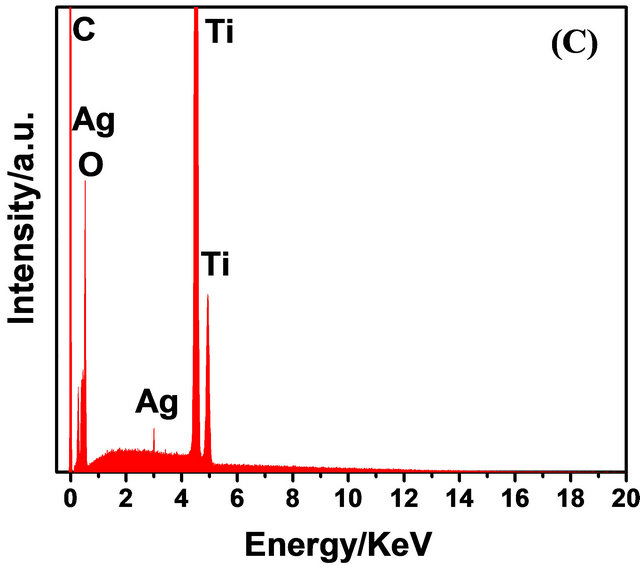 (b)
(b)
Figure 1. SEM (a), TEM (b) and EDS (c) image of C@Ag/ TiO2.
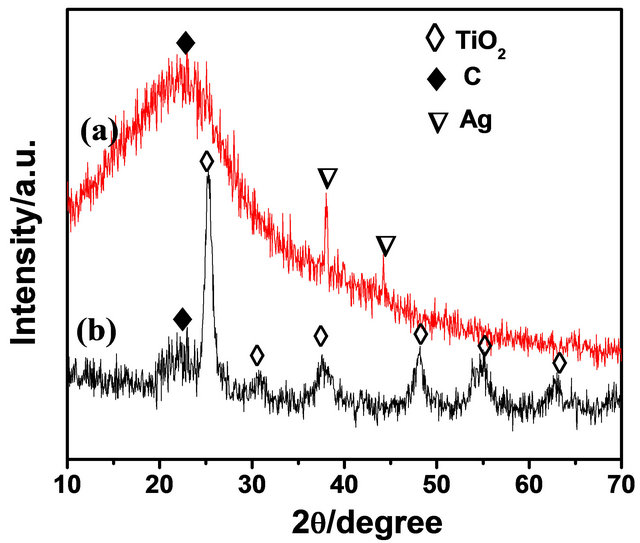
Figure 2. XRD patterns of C@Ag and C@Ag/TiO2 composite photocatalysts.
65-2871) [20] and C, respectively. Figure 2(b) shows the characteristic diffraction peaks of anatase TiO2 (JCPDS file No. 84-1286) [8] expect for Ag and graphitic carbon [17]. The XRD results suggest the obtained samples had three phases of Ag, C and TiO2.
The chemical states of C, O, Ti, and Ag in the prepared samples were investigated by XPS. Figure 3 shows the high-resolution C 1s, O 1s, Ti 2p and Ag 3d XPS spectra of C@Ag/TiO2 samples, respectively. The C1s spectrum is deconvoluted into tow peaks 284.6 and 286.2 eV. The C 1s peak at 284.6 eV is assigned to the sp2 C-C bond [21], and the C 1s peak at 286.2 eV is assigned to the sp2 C = C bond [22]. The XPS spectrum of Ag s3d in Figure 3(b) shows that the 3d5/2 and 3d3/2 signals are located at 368.4 eV and 374.4 eV, respectively, and the splitting of the 3d doublet is 6.0 eV. This indicates that the deposited Ag mainly exists in the Ag0 state on the TiO2 nanotube surface [23]. The O 1s core level peaks at 530.0 eV come from Ti-O-Ti linkages in TiO2 (Figure 3(c)), which is consistent with that of the reports [24]. The pair of peaks of Ti 2p3/2 and 2p1/2 appeared at 458.7 and 464.4 eV, respectively, and the splitting of the 3d doublet is 5.8 eV, which can be assigned to Ti4+ 2p peaks of TiO2 (Figure 3(d)) [22]. These results further confirm that the obtained sample is composed of C@Ag/TiO2.
The UV-vis diffuse reflectance spectra of N-P25 and C@Ag/TiO2 is shown in Figure 4. It can be clearly seen that C@Ag/TiO2 has a strong visible light absorption ranged from 400 nm to 800 nm, which is stronger than that of N-P25. Furthermore, absorption edge is red
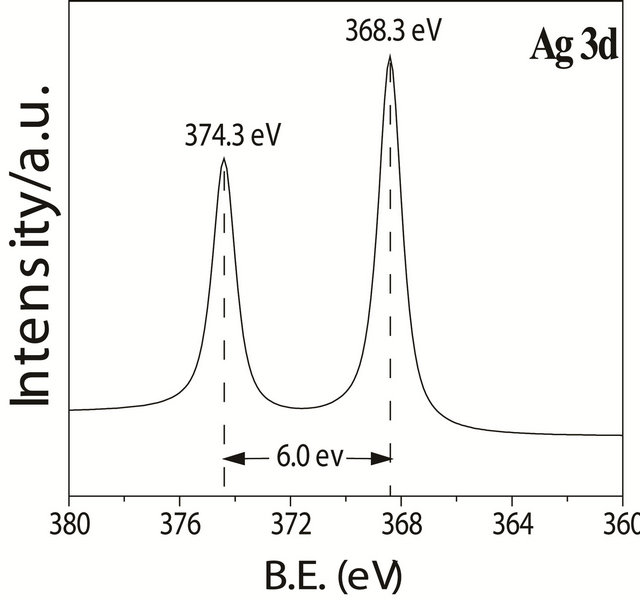 (a)
(a) (b)
(b)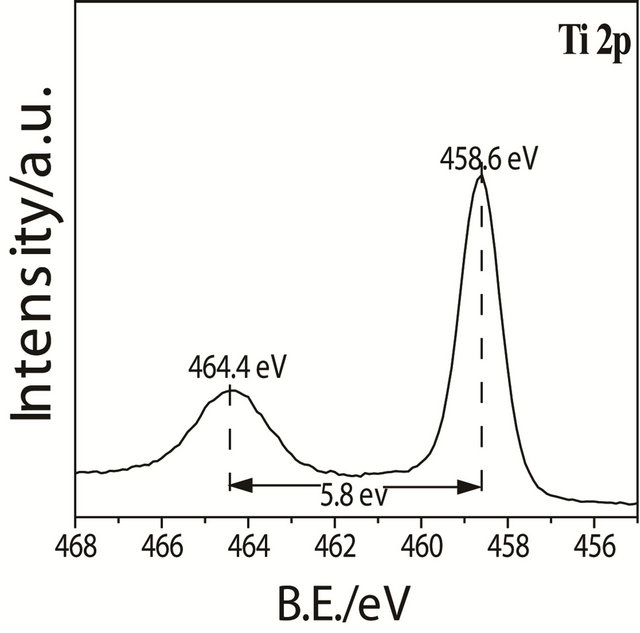 (c)
(c)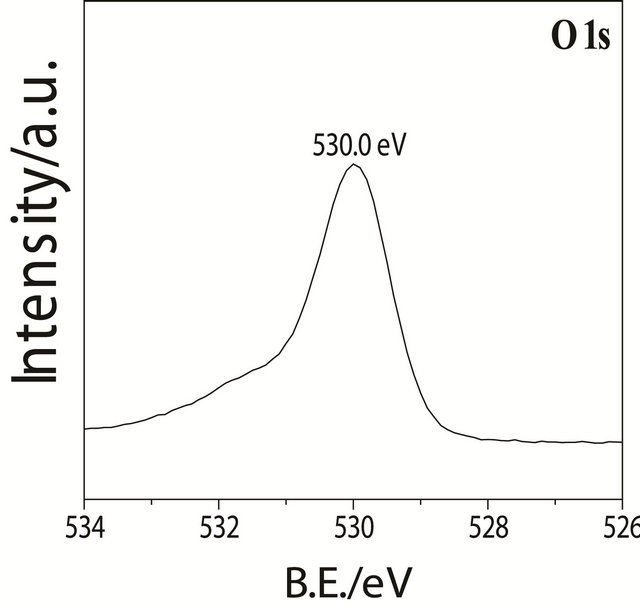 (d)
(d)
Figure 3. XPS of the obtained sample C@Ag/TiO2: (a) C 1s; (b) Ag 3d; (c) O 1s; (d) Ti 2p.
shift. These imply that C@Ag/TiO2 have higher visible light photocatalytic activity than N-P25.
3.2. Photocatalytic Activities of Samples
Figure 5 shows the photocatalytic activity of the asprepared samples in decomposing organic pollutant MO under visible light irradiation. The photocatalytic activities of C@Ag/TiO2 are all better than that of N-P25. The degradation ratios of MO go up and then get down with the content of C@Ag increasing, which indicates that the content of C@Ag can effectively influence the photocatalytic activity of the obtained catalysts. Furthermore, compared with other catalysts, CAT-2 exhibits the optimal photocatalytic activity under visible light irradiation, which is 3 times than that of N-P25.
The reusability of CAT-2 towards MO photocatalytic decomposition under visible light irradiation is shown in Figure 6. No obvious loss of activity was observed after five cycles, which suggests that the prepared C@Ag/ TiO2 has excellent stability and can be used as a recyclable photocatalyst.
3.3. Discussion on the Reaction Mechanism
In order to analyze the mechanism of the above performance, we depicted the basic structure of the C@Ag
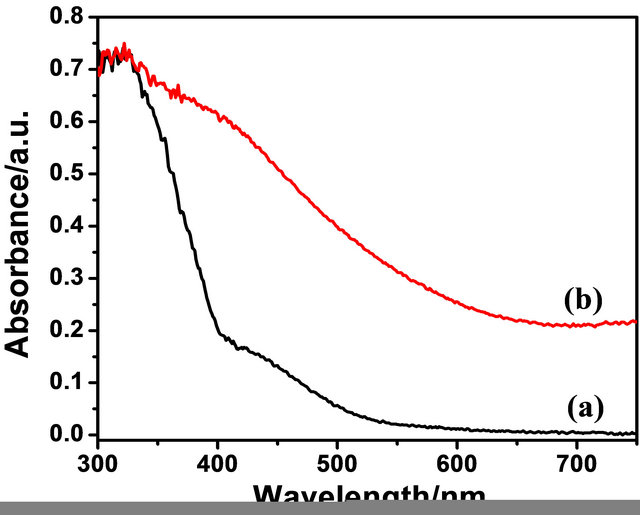
Figure 4. UV-vis absorption spectra of as-obtained samples: (a)N-P25; (b) C@Ag/TiO2.
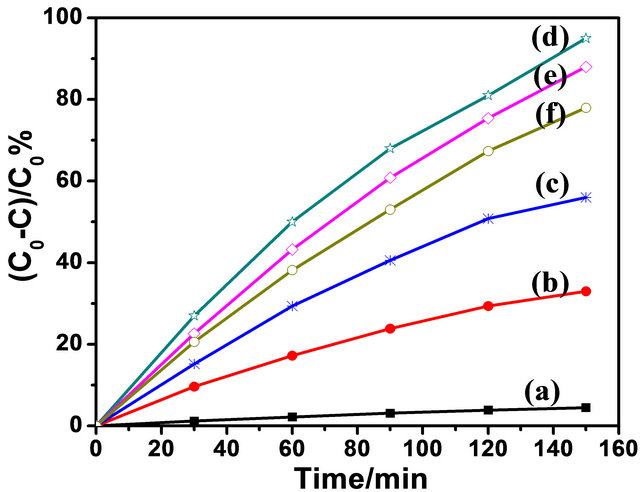
Figure 5. Photocatalytic activities of as-obtained samples under visible light irradiation: (a) No catalyst; (b) N-P25; (c) CAT-1; (d) CAT-2; (e) CAT-3; (f) CAT-5.
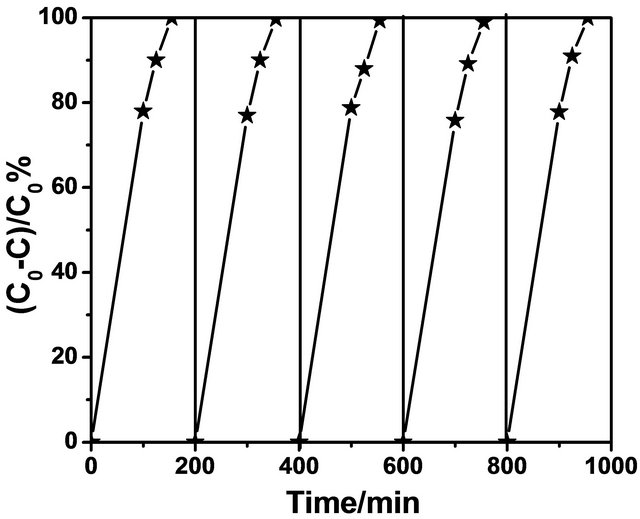
Figure 6. Reusability of CAT-2 for MO photocatalytic decomposition under visible light irradiation.
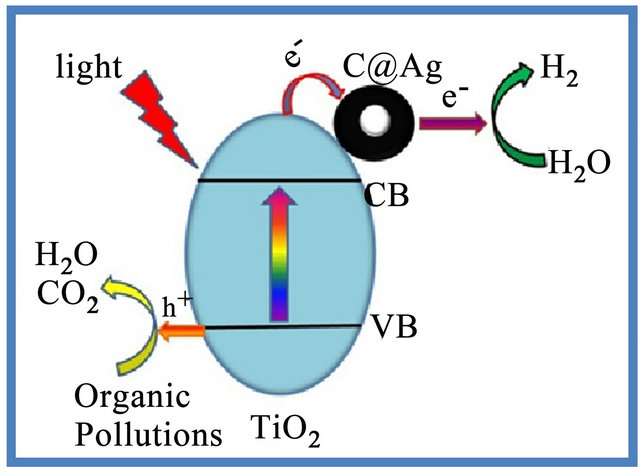
Figure 7. Mechanism schematic of C@Ag/TiO2 compound photocatalyst under visible light irradiation.
modified TiO2 and the main charge-transfer processes between TiO2 and C@Ag after being activated under visible light irradiation was proposed (Figure 7). The achieved high efficiency may be attributed to three major improvements. Firstly, the more content of C@Ag in the compound, can not only improve the sbsorption of visible light, the rapid transfer of photogenerated electron, but also effectively reduce the recombination rates of electron and holes which can afford more photogenerated electron-hole. Secondly, the silver nanoparticles are not likely to be oxidized under the protection of the carbon layer, which is good for the stability of the obtained C@Ag/TiO2 photocatalysts under visible light irradiation. Thirdly, localized surface plasmon resonance effect was significantly enhanced photocatalytic effect.
4. Conclusion
A new the C@Ag/TiO2 composite photocatalyst is prepared by a simple hydrothermal method and sol-gel, photocatalytic activity was significantly enhanced under visible light irradiation. The as-prepared photocatalyst exhibits good stability. Good conductive properties of C@Ag nanoparticles and localized surface plasmon resonance effect are to promote the main reason for the enhanced photocatalytic activity.
5. Acknowledgements
This work was financially supported by Research Fund of Guangdong Provincial Laboratory of Green Chemical Technology, China (GC201102), Ph.D. Startup Programs Foundation of Zhanjiang Normal University (ZL1102) and (ZL0903), Guangdong Natural Science Foundation for Ph.D. Start-up Research Program (No. 10452404801 004521).
REFERENCES
- M. Shang, W. Z. Wang, S. M. Sun, J. Ren, L. Zhou and L. Zhang, “Efficient Visible Light-Induced Photocatalytic Degradation of Contaminant by Spindle-like PANI/ BiVO4,” The Journal of Physical Chemistry C, Vol. 113, No. 47, 2009, pp. 20228-20233. doi:10.1021/jp9067729
- R. Asahi, T. Morikawa, T. Ohwaki, K. Aoki and Y. Taga, “Visible-Light Photocatalysis in Nitrogen-Doped Titanium Oxides,” Science, Vol. 293, No. 5528, 2001, pp. 269-271. doi:10.1126/science.1061051
- R. Shi, J. Lin, Y. J. Wang, J. Xu and Y. F. Zhu, “Visible-Light Photocatalytic Degradation of BiTaO4 Photocatalyst and Mechanism of Photocorrosion Suppression,” The Journal of Physical Chemistry C, Vol. 114, No. 14, 2010, pp. 6472-6477. doi:10.1021/jp9101866
- L. Ge, M. X. Xu and H. B. Fang, “Synthesis of Novel Photocatalytic InVO4-TiO2 Thin Films with Visible Light Photoactivity,” Materials Letters, Vol. 61, No. 1, 2007, pp. 63-66. doi:10.1016/j.matlet.2006.04.006
- L. Ge, M. X. Xu and H. B. Fang, “Preparation of TiO2 Thin Films from Autoclaved Sol Containing Needle-like Anatase Crystals,” Applied Surface Science, Vol. 253, No. 2, 2006, pp. 720-725. doi:10.1016/j.apsusc.2005.12.162
- M. C. Long, W. M. Cai, J. Cai, B. X. Zhou, X. Y. Chai and Y. H. Wu, “Efficient Photocatalytic Degradation of Phenol over Co3O4/BiVO4 Composite under Visible Light Irradiation,” The Journal of Physical Chemistry B, Vol. 110, No. 41, 2006, pp. 20211-20216. doi:10.1021/jp063441z
- X. S. Zhou, F. Peng, H. J. Wang, H. Yu and J. Yang, “Effect of Nitrogen-Doping Temperature on the Structure and Photocatalytic Activity of the B,N-Doped TiO2,” Journal of Solid State Chemistry, Vol. 184, No. 1, 2011, pp. 134-140. doi:10.1016/j.jssc.2010.10.039
- X. S. Zhou, F. Peng, H. J. Wang and H. Yu, “Boron and Nitrogen-Codoped TiO2 Nanorods: Synthesis, Characterization, and Photoelectrochemical Properties,” Journal of Solid State Chemistry, Vol. 184, No. 11, 2011, pp. 3002-3007. doi:10.1016/j.jssc.2011.09.017
- M. Bowker, D. James, P. Stone, R. Bennett, N. Perkins, L. Millard, et al, “Catalysis at the Metal-Support Interface: Exemplified by the Photocatalytic Reforming of Methanol on Pd/TiO2,” Journal of Catalysis, Vol. 217, No. 2, 2003, pp. 427-433. doi:10.1016/S0021-9517(03)00074-5
- Y. X. Li, G. Lu and S. Li, “Photocatalytic Oxidation of Selected Fluorenols on TiO2 Semiconductor,” Journal of Photochemistry and Photobiology A: Chemistry, Vol. 152, No. 1-3, 2002, pp. 219-228. doi:10.1016/S1010-6030(02)00210-1
- L. L. Perissinotti, M. A. Brusa and M. A. Grela, “Yield of Carboxyl Anion Radicals in the Photocatalytic Degradation of Formate over TiO2 Particles,” Langmuir, Vol. 17, No. 26, 2001, pp. 8422-8427. doi:10.1021/la0155348
- M. Penpolcharoen, R. Amal and M. Brungs, “Degradation of Sucrose and Nitrate over Titania Coated NanoHematite Photocatalysts,” Journal of Nanoparticle Research, Vol. 3, No. 4, 2001, pp. 289-302.
- R. Jin, W. Gao, J. Chen, H. Zeng, F. Zhang, Z. Liu, et al, “Photocatalytic Reduction of Nitrate Ion in Drinking Water by Using Metal-loaded MgTiO3-TiO2 Composite Semiconductor Catalyst,” Journal of Photochemistry and Photobiology A: Chemistry, Vol. 1652, No. 2-3, 2004, pp. 585-590. doi:10.1016/S1010-6030(03)00420-9
- P. Chen, W. Li, T. L. Zhou, Y. P. Jin and M. Y. Gu, “Physical and Photocatalytic Properties of Zinc Ferrite Doped Titania under Visible Light Irradiation,” Journal of Photochemistry and Photobiology A: Chemistry, Vol. 168, No. 1-2, 2004, pp. 97-101. doi:10.1016/j.jphotochem.2004.05.018
- B. Xin, L. Jing, Z. Ren, B. Wang and H. Fu, “Effects of Simultaneously Doped and Deposited Ag on the Photocatalytic Activity and Surface States of TiO2,” The Journal of Physical Chemistry B, Vol. 109, No. 7, 2005, pp. 2805-2809. doi:10.1021/jp0469618
- A. Romanyuk, P. Oelhafen, “Formation and Electronic Structure of TiO2-Ag Interface,” Solar Energy Materials and Solar Cells, Vol. 91, No. 12, 2007, pp. 1051-1054. doi:10.1016/j.solmat.2007.02.016
- M. J. Kerker, “The Optics of Colloidal Silver: Something Old and Something New,” Colloid & Interface Science, Vol. 105, No. 2, 1985, pp. 297-314. doi:10.1016/0021-9797(85)90304-2
- P. Zhang, C. L. Shao, Z. Y. Zhang, M. Y. Zhang, J. B. Mu, Z. C. Guo, Y. Y. Sun and Y. C. Liu, “Core/Shell Nanofibers of TiO2@Carbon Embedded by Ag Nanoparticles with Enhanced Visible Photocatalytic Activity,” Journal of Materials Chemistry, Vol. 21, No. 44, 2011, pp. 17746-17753. doi:10.1039/c1jm12965a
- X. M. Sun and Y. D. Li, “Colloidal Carbon Spheres and Their Core/Shell Structures with Noble-metal Nanoparticles,” Angewandte Chemie International Edition, Vol. 43, No. 5, 2004, pp. 597-601. doi:10.1002/anie.200352386
- H. J. Wang, L. Yang, H. Yu and F. Peng, “A Highly Efficient and Stable Visible-Light Plasmonic Photocatalyst Ag-AgCl/CeO2,” World Journal of Nano Science and Engineering, Vol. 1, No. 4, 2011, pp. 129-136.
- Q. Lv, C. B. Cao, C. Li, J. T. Zhang, H. S. Zhu, X. Kong, et al., “Formation of Crystalline Carbon Nitride Powder by a Mild Solvothermal Method,” Journal of Materials Chemistry, Vol. 13, No. 6, 2003, pp. 1241-1243. doi:10.1039/b303210h
- Y. Qiu and L. Gao, “Chemical Synthesis of Turbostratic Carbon Nitride, Containing C-N Crystallites, at Atmospheric Pressure,” Chemical Communications, No. 18, 2003, pp. 2378-2379. doi:10.1039/b307086g
- E. Stathatos, P. Lianos, P. Falaras and A. Siokou, “Photocatalytically Deposited Silver Nanoparticles on Mesoporous TiO2 Films,” Langmuir, Vol. 16, No. 5, 2000, pp. 2398-2400. doi:10.1021/la981783t
- M. Sathish, B. Viswanathan, R. P. Viswanath and C. S. Gopinath, “Synthesis, Characterization, Electronic Structure, and Photocatalytic Activity of Nitrogen-Doped TiO2 Nanocatalyst,” Chemistry of Materials, Vol. 17, No. 25, 2005, pp. 6349-6353. doi:10.1021/cm052047v
NOTES
*Corresponding author.

